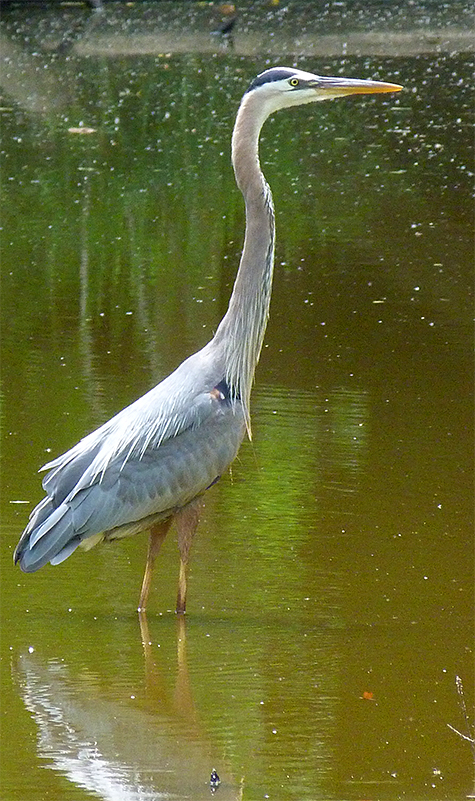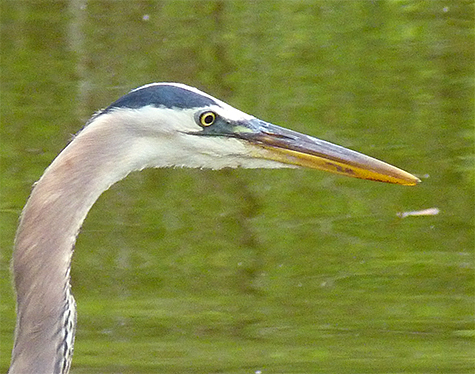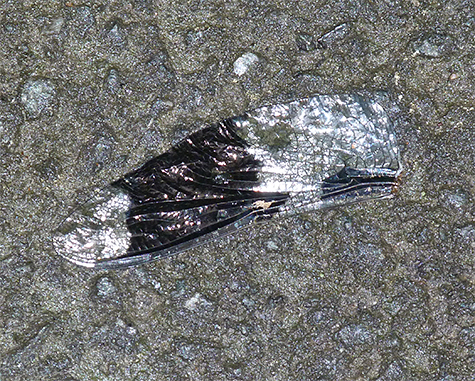
Great blue heron (GBH) has been a common sight here at the Museum for the past eight years. Most of that time there was one present on a daily basis in the Wetlands. I’m afraid, though, our long time resident GBH has left us. I don’t know why our local GBH has moved on or whether or not it has expired, but I have not seen it. I keep a weekly checklist of all the birds I see here at the Museum, check it off every Saturday at the end of the day. Check marks are irregular for GBH during the past half year.
The heron that is visiting us now is most certainly a different heron, less skittish, allowing itself to be watched up close as is feeds just off the Main Wetlands Overlook. Here’s some shots of the bird.





Over the past few weeks we’ve had much rain. At the same time, the offspring of frogs that bred in February, March and April are maturing and morphing into frogs. They are leaving the water and heading out to start new lives in the grasses and forest surrounding our Wetlands.
Last week the majority of frogs that I saw crossing the pavement in Explore the Wild were spring peepers.



Keep an eye out for these frogs, they’re easy to miss as you walk along, and easy to damage if stepped on.
This past week the bulk of the frogs seen were pickerel frogs.

I’d been seeing young pickerel frogs at the edge of the Wetlands for a week or more, but haven’t seen any ready to leave the water. The rains of the past several days brought them out in large numbers.


If you stop by the Red Wolf Enclosure, you may notice that our red wolves look rather thin. They’ve shed their winter coats.

Walking along the north side of the Wetlands I noticed four wings next to the side of the path, dragonfly wings. A male common whitetail had been captured and eaten. Difficult to determine exactly what ate the insect, but I’d wager it was a bird, probably a great-crested flycatcher, a local nester.



Just a few feet from the dragonfly wings, I noticed the first sign of woolly aphids returning to the alders on the edge of the Wetlands. Woolly aphids have a close relationship with both ants and harvesters (butterflies that produce carnivorous caterpillars). Check previous postings for more about those relationships.

Butterfly weed has been coming into bloom in Catch the Wind. It didn’t take long before milkweed leaf beetles showed up, and started to mate. The beetle’s larvae eat the plant’s leaves.

As always, keep an eye open while walking through the Outdoor Exhibits here at the Museum and you will be rewarded.
Howdy, I cant believe a number of of the web sites I have been taken to from stumblupon. I was trying to pass a couple of dull 60 minutes away, when stumbleupon brought me here. What a extraordinary page you possess I’m so delighted to have discovered it I have just passed the previous 20 mins running through several of your articles and reviews, and have also bookmarked some of them. I will defiantly be back to learn a tiny bit more when I have a little more time.
Thanks,